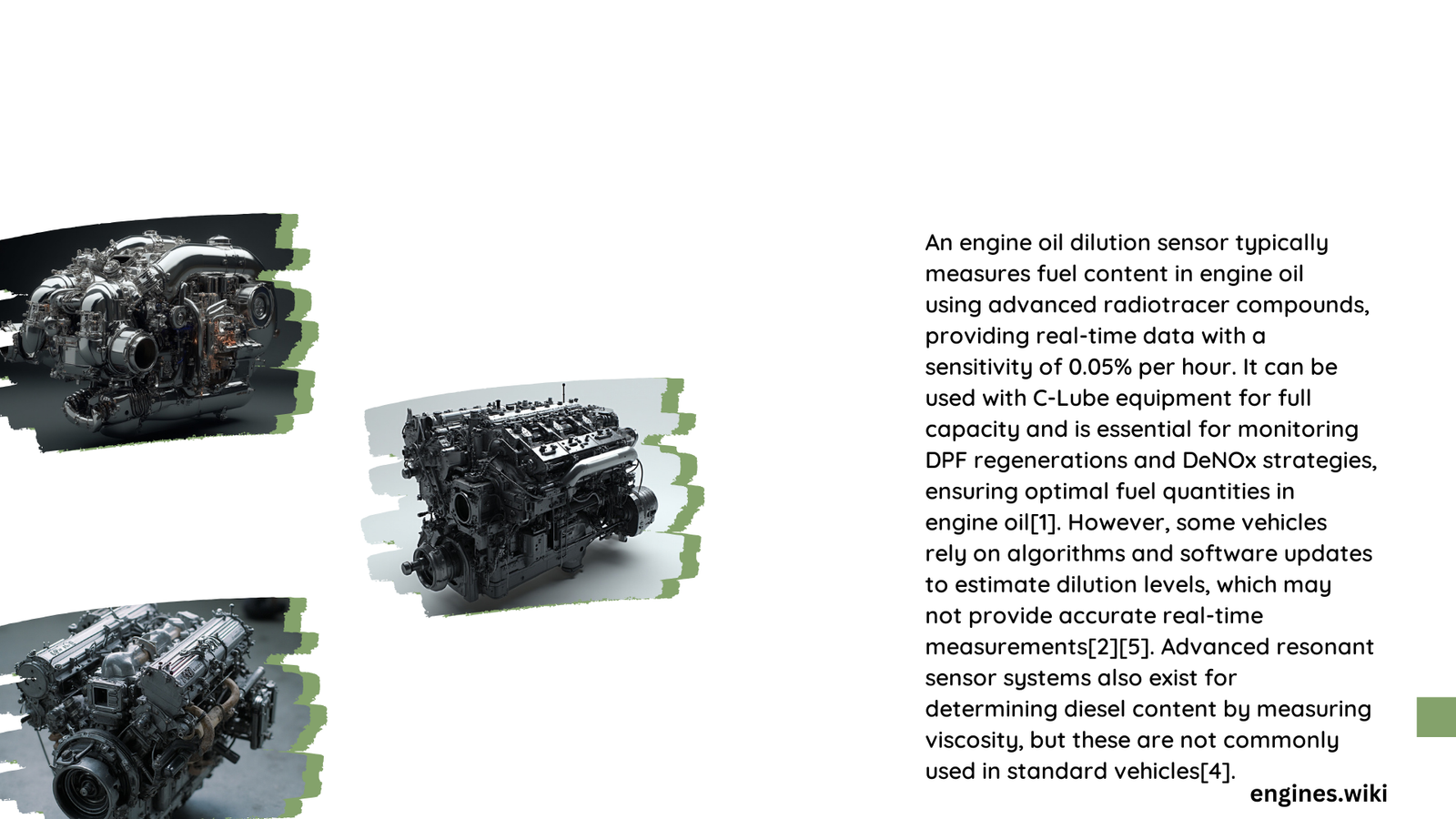The engine oil dilution sensor is a critical component in modern vehicles, designed to monitor and measure the fuel content in engine oil. This advanced technology helps maintain optimal engine performance and longevity by detecting excessive fuel contamination in the oil. The sensor operates continuously, providing real-time data to the engine management system, allowing for timely interventions to prevent potential engine damage caused by oil dilution.
What is the Purpose of an Engine Oil Dilution Sensor?
An engine oil dilution sensor serves as a watchdog for your vehicle’s engine health. Its primary function is to detect and measure the amount of fuel that has mixed with the engine oil. This is crucial because excessive fuel dilution can lead to:
- Reduced oil viscosity
- Decreased lubrication effectiveness
- Increased engine wear
- Potential engine damage
The sensor helps prevent these issues by alerting the driver or engine management system when fuel dilution reaches concerning levels.
How Does an Engine Oil Dilution Sensor Work?

The engine oil dilution sensor operates on sophisticated principles to accurately measure fuel content in oil. Here’s a breakdown of its functionality:
- Continuous Monitoring: The sensor takes measurements at regular intervals, typically once per minute.
- Tracer Technology: A small amount of radiotracer compound (less than 100 µl) is added to the engine oil sump.
- Non-Invasive Measurement: The tracer doesn’t alter oil properties, ensuring accurate readings without affecting engine performance.
- Real-Time Data: Results are transmitted to the engine management system or a connected device for immediate analysis.
What are the Key Specifications of an Engine Oil Dilution Sensor?
Understanding the specifications of an engine oil dilution sensor is crucial for vehicle owners and technicians. Here’s a table outlining the key parameters:
| Specification | Value |
|---|---|
| Measurement Frequency | 1 per minute |
| Sensitivity | 0.05% per hour |
| Installation | Direct from engine sump |
| Tracer Volume | <100 µl |
| Data Interface | Ethernet connection |
How to Troubleshoot Engine Oil Dilution Sensor Issues?
When faced with potential sensor malfunctions, follow these troubleshooting steps:
- Check for error codes using a diagnostic tool
- Verify proper tracer addition
- Inspect Ethernet connections
- Ensure software is up-to-date and properly configured
- Conduct off-line measurements for validation
For more advanced diagnostics, consider these methods:
- Kinematic viscosity testing
- Flash point analysis
- Fourier-transform Infrared (FTIR) Spectroscopy
- Gas chromatography
What are the Signs of a Failing Engine Oil Dilution Sensor?
Recognizing the symptoms of a malfunctioning sensor is crucial for timely intervention. Look out for:
- Inconsistent or erratic readings
- Engine performance issues
- Unusual oil consistency or color
- Frequent low oil pressure warnings
- Excessive fuel consumption
How to Replace an Engine Oil Dilution Sensor?
Replacing an engine oil dilution sensor involves several steps:
- Locate the sensor, typically near the oil sump
- Disconnect the electrical connections
- Remove the old sensor
- Install the new sensor, ensuring proper fitment
- Reconnect electrical components
- Add the required tracer compound
- Calibrate the system using manufacturer-specific software
Note: Always consult your vehicle’s manual or a professional technician for model-specific instructions.
What are the Acceptable Limits for Oil Dilution?
Understanding the acceptable limits for oil dilution is crucial for maintaining engine health:
- Gasoline Engines: Maximum 2.4% fuel dilution
- Diesel Engines: Maximum 3.4% fuel dilution
Exceeding these limits can lead to:
- Reduced oil viscosity
- Increased oxidation
- Fuel washing of cylinder walls
- Accelerated engine wear
How Does Oil Dilution Affect Engine Performance?
Oil dilution can significantly impact engine performance and longevity:
- Reduced Lubrication: Diluted oil loses viscosity, leading to insufficient lubrication and increased friction.
- Higher Engine Temperatures: Poor lubrication results in elevated operating temperatures.
- Decreased Efficiency: Fuel-contaminated oil can reduce overall engine efficiency.
- Accelerated Wear: Metal components experience increased wear due to inadequate protection.
- Potential Engine Failure: In severe cases, prolonged oil dilution can lead to catastrophic engine failure.
What are the Benefits of Using an Engine Oil Dilution Sensor?
Implementing an engine oil dilution sensor offers several advantages:
- Early detection of fuel contamination
- Prevention of engine damage
- Optimized oil change intervals
- Improved fuel efficiency
- Extended engine lifespan
- Real-time monitoring capabilities
- Integration with vehicle diagnostics systems
By providing continuous, accurate measurements of fuel content in engine oil, these sensors play a crucial role in maintaining vehicle health and performance.
